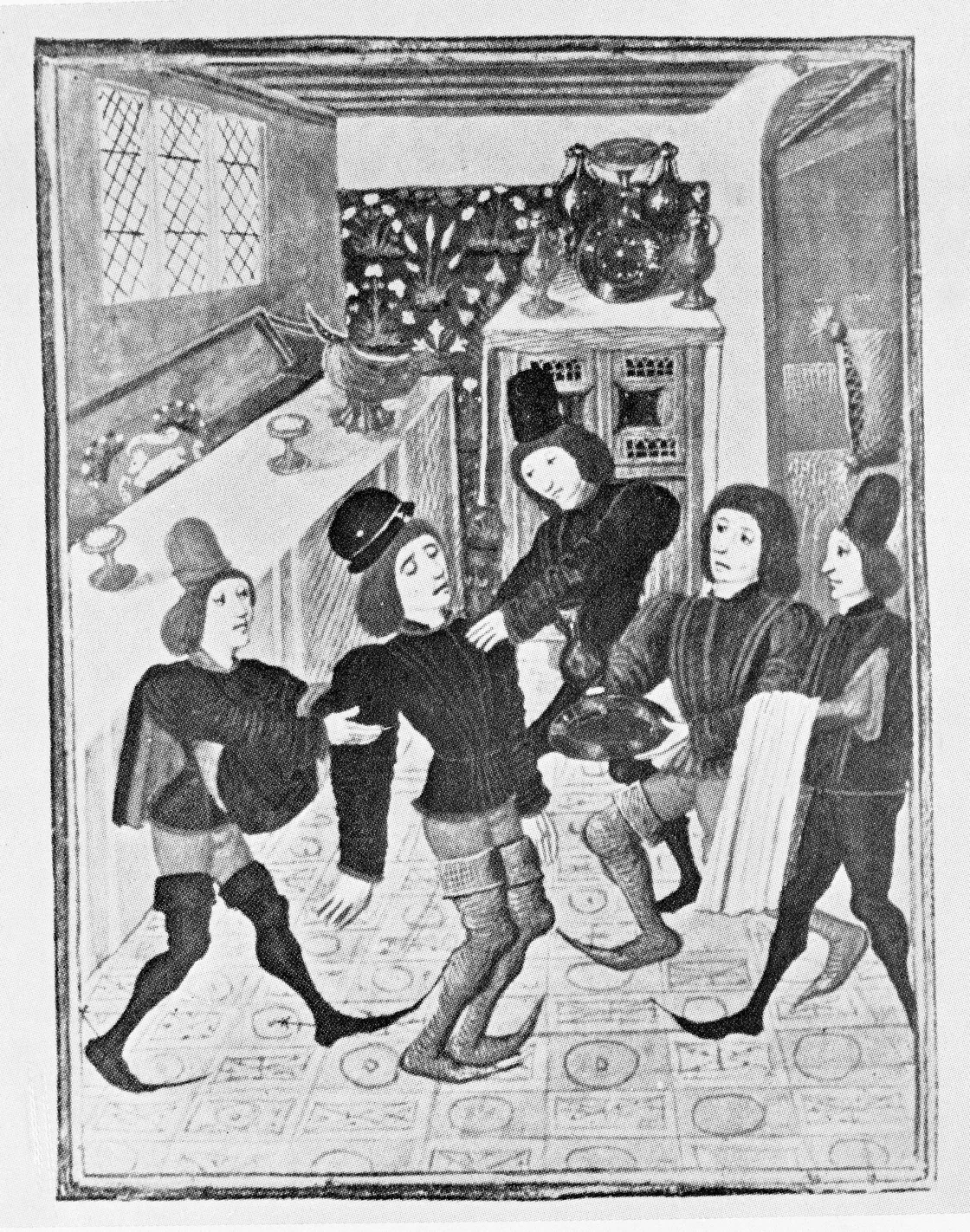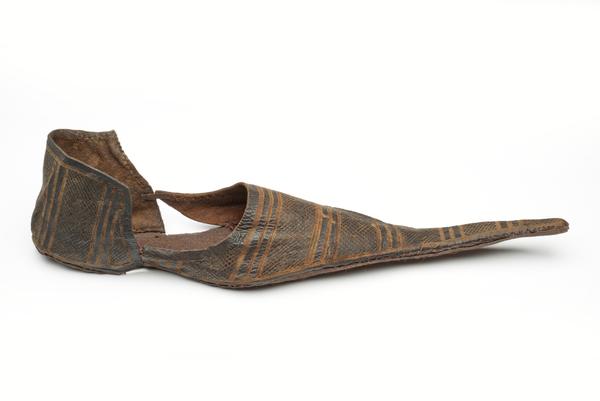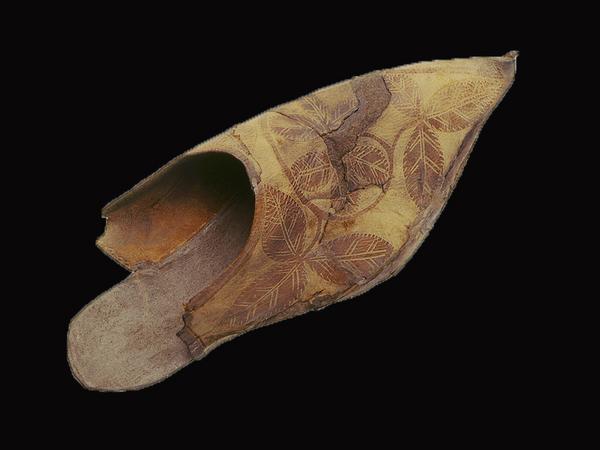Pointy shoes & sexuality in medieval London
Called ‘poulaines’, or Polish shoes, this humble footwear in our collection caused controversy in the capital from the 1300s.
Around 1300–1500
This page contains content some people may consider sensitive, or find offensive or disturbing. Understand more about how we manage sensitive content.
Fashion, sexuality and sin
The extremely pointy poulaine was the height of London fashion from the 12th to the 14th century. But as with many fashion movements before and since, this new trend was controversial to some.
The church began to attack pointed shoes as contributing to people’s sexual preferences. Yes, the poulaine was seen to encourage what the medieval church referred to as ‘sodomy’ – a catch-all term for any sex considered ‘non-standard’.
The popularity of poulaines in London
Poulaines were a popular shoe style for men, mostly worn by wealthier Londoners. The elongated toe points would be stuffed with material like moss or hair to keep their shape. They were also called ‘cracows’, as they were thought to come from the Polish city that is now Kraków.
The name ‘poulaine’ refers to the point of the shoe – and in many instances, these were extremely pointy. Some of the shoes in our collection have points extending over 10cm beyond the toe.
“you can actually see depictions of medieval knights wearing poulaines in battle”
In 1394, a monk of Evesham, Worcestershire, claimed some people wore shoes with pointed toes "half a yard [45cm] in length, thus it was necessary for them to be tied to the shin with chains of silver before they could walk with them".
Surprisingly, you can actually see depictions of medieval knights wearing poulaines in battle. But their armourers would have to cut the toes off of the shoe so knights could still run in them.

Note the shoes in this 14th century scene of French military commander Gaston de Foix's death.
Turned into a symbol of sin
Medieval people associated extravagant fashions, and pointed shoes in particular, with sexualities they considered to be ‘alternative’ or ‘deviant’.
In the 12th century, Benedictine monk Orderic Vitalis wrote that people who wore pointed shoes “gave themselves up to sodomitic filth”, and that young men who wore them also had “long luxurious locks like women,” and “over-tight shirts and tunics”.
In 1348, the Great Pestilence (commonly known today as the Black Day) arrived in London. This outbreak of plague would kill approximately 40,000 people. That’s somewhere between a third and half of the city's population. Clerics claimed the plague was sent by God to punish Londoners for their sins, especially sexual sins. London's fashion scene became a symbol of that sin.

Decorated and pointed shoes like this would only have been afforded by the wealthy fashion-conscious sections of society.
Why was there backlash against poulaines?
The accusation that these shoes could be a symbol of sin seems strange to us today. But in the medieval period, the long point of the poulaine was regarded as phallic. They were mostly worn by young men. And some would stand on street corners wiggling their shoes suggestively at people walking by. It was said that if somebody wore poulaines with bells sewn to the ends of them, it indicated that the wearer was available for sexual frolics.
In the eyes of the church, the length of poulaines prevented people from being able to kneel and pray. They became the target of censure. Priests called them ‘Satan's Claws’.
In 1362, Pope Urban V passed an edict banning them, but it didn't really stop anybody from wearing them. England then passed sumptuary laws (laws governing dress and behaviour) which set out regulations for how long somebody's poulaines could be based on their station. Commoners were charged to wear shorter poulaines than barons and knights, who were regarded as being less susceptible to the types of sexual behaviours the law challenged.
Writing/researching credit: Andrew Millar





